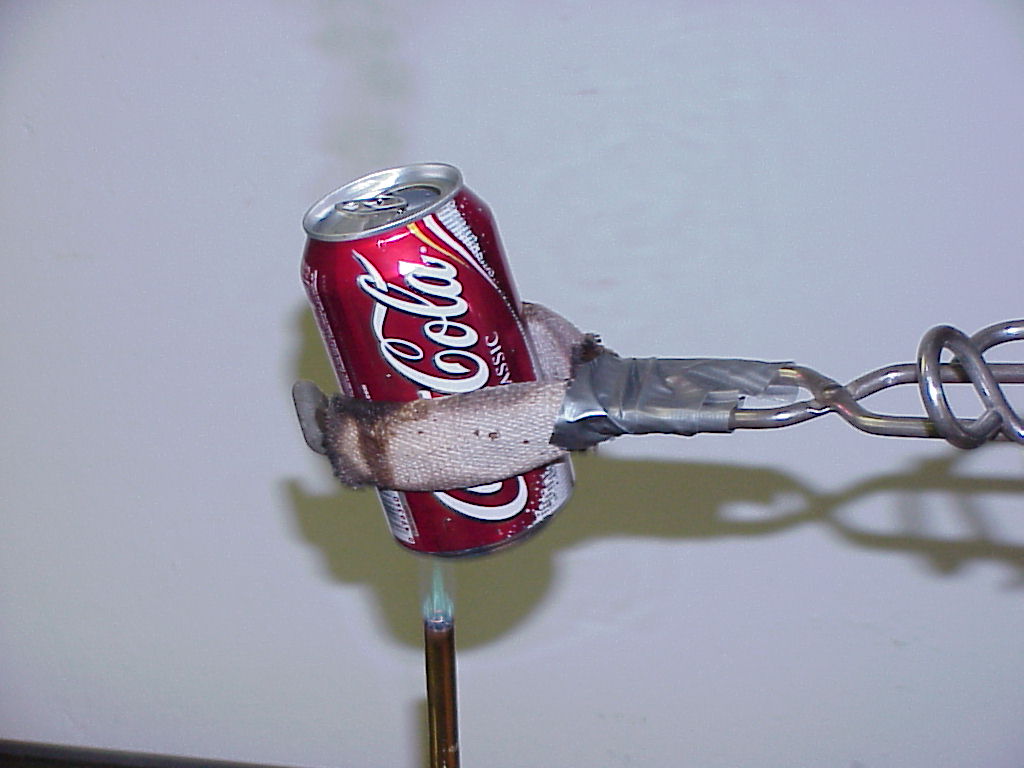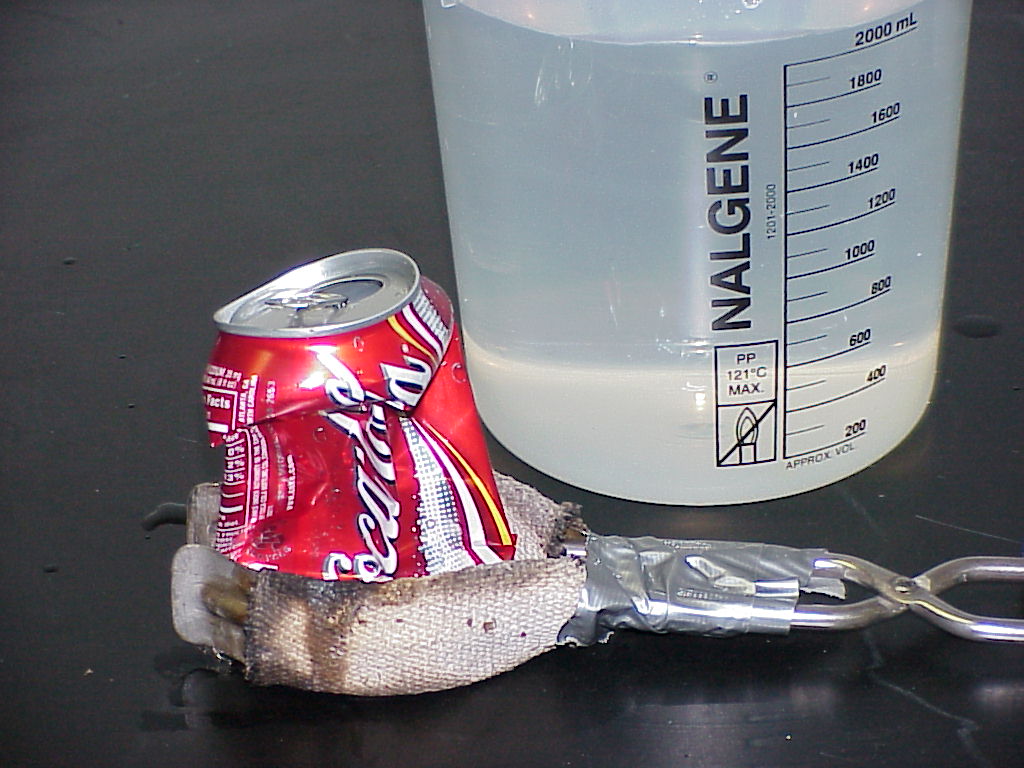Physics
Demo Number: 098
|
Approximate Run Time: 5 minutes |
|||||
|
Soda Can Crushed by Steam Condensation |
||||||
Demo
Description
An opened and empty soda can is filled
with steam by boiling some water in its bottom. The can is then turned over and its top
quickly submerged in a container of water. The abrupt cooling of the effectively
resealed can reduces its internal pressure. The internal pressure reduction allows
the atmosphere to crush the can. |
|
Scientific
Principles
�
Pressure
Balance Consequences |
||||
Equipment
·
Soda can ·
Propane
Torch ·
Tongs ·
Open-Topped
Vessel of Water |
|
Equipment
Location
·
Kit ((098),(125),(149)) on row [D-3-5] houses the first three items. ·
[D-3-6] has
a plastic drink pitcher with handle which will serve as water vessel. |
||||
|
|
|||||
Instructions
Photo 1 shows a soda can being held by a
set of tongs. The piece of duct tape on the tongs is
for purposes of the photo only. The can is being heated from the bottom
by a flame from the propane torch. A small amount of water (¼ inch or so)
was placed in the bottom of the can. The heat had caused boiling of the water
for a minute or so prior to the instant photo 1 was snapped. This boiling is evidenced by by the darkish looking mixing cloud coming out of the top
of the can, commonly referred to as steam boiling out of the can. After a minute or so of vigorous boiling , steam has replaced most of the air in the can. The steam-filled can is removed from the
flame and quickly flipped over so that its top is downwards. The top of the can
is rapidly thrust into the room temperature water in the big beaker in photo
2. The resulting sudden condensation of the
steam in the water-sealed can causes the can's internal pressure to drop so
low that atmospheric pressure implodes the can. The resulting state of the can is seen
in photo 2. Writeup created by David A. Burba
Copyright © 2013, Vanderbilt University. All Rights
Reserved.
|
||||||

